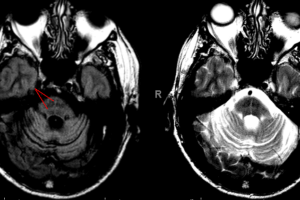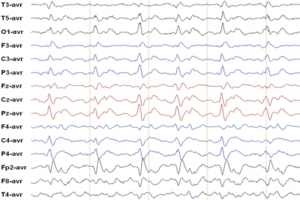Restless leg syndrome (RLS) is a common neurological disorder with a prevalence of 5 to 10%. A sensorimotor disorder characterized by the urge to move one’s legs often accompanied by uncomfortable, unpleasant leg sensations, RLS can disrupt sleep and as a result impair daytime quality of life.
Diagnostic features restless leg syndrome
The following features are part of the NIH criteria for RLS (also called Willis-Ekbom Disease):
- The irresistible urge to move legs due to uncomfortable leg sensations/ dysesthesias
- Symptoms begin or worsen during inactivity
- Symptoms begin or worsen in the evening or at night
- RLS is at least partially relieved by movement
The sensations of RLS are often described as Electric, Bubbles, Aching or Cramping, Pulling or Tugging, Tingling, Tearing, Throbbing, Crawling or Creeping, Pain, Like a toothache in the legs, Growing pains, or even “Itching bones.”
Restless legs syndrome is often accompanied by periodic limb movement disorder during sleep.
Causes of restless leg syndrome
Approximately 50% of RLS cases are familial, where onset is typically before age 50 years. A number of studies have linked familial restless legs syndrome to at least six loci on different chromosomes.
Restless legs syndrome can also be associated with disease states and medications that alter dopamine metabolism, like iron deficiency and pregnancy, or with other disease states like chronic renal failure and peripheral neuropathy.
Medications that can precipitate RLS symptoms include:
- Antihistamines
- Antidepressants
- SSRI’s
- Tricyclics
- Dopamine antagonists
- Neuroleptics
- Antiemetics
- Metoclopramide
A variety of commonly used stimulants and depressants also exacerbate restless legs symptoms, including Caffeine, Nicotine, and Alcohol.
Treatment of restless leg syndrome
The management of RLS starts with trying to identify and eliminate factors that could precipitate the symptoms. Management of underlying peripheral neuropathy or iron deficiency may improve symptoms. Consider withdrawing potential precipitating medications.
The second line of RLS therapy is medication. Because dopamine deficiency (or inhibition) often triggers RLS, dopamine agonists or dopamine precursors make up first-line drug therapy.
- Dopamine agonists ropinorole (Requip) and pramipexole (Mirapex) are used in moderate to severe RLS.
- Carbidopa/Levodopa (Sinemet) is effective immediately but 80% of patients will experience augmentation. Augmentation is an earlier occurrence of symptoms than usual (eg 6pm instead of 8pm) or a spread to arms or an increased severity. Another phenomenon associated with Levodopa therapy in RLS is rebound: symptoms recur during the night, often awakening the patient. This occurs in 1/3 patients on Levodopa. This makes Levodopa a better treatment for occasional situational RLS like theater visits and airplane flights.
- Gabapentin, opioids and benzodiazepines are useful in some individuals.
If augmentation occurs it is best to switch to another class of medication for a period before reintroducing the dopamine agonist.
There are also non-pharmacological therapies for RLS, and these include:
- Decreasing caffeine, alcohol and nicotine intake
- Regular moderate physical activity
- Rubbing/ soaking limbs
- Good sleep hygiene
- Relaxation techniques
- Mental diverting techniques
Reference
Silber MH. Restless legs syndrome. Mayo Clin Proc. 1997 Mar;72(3):261-4.


